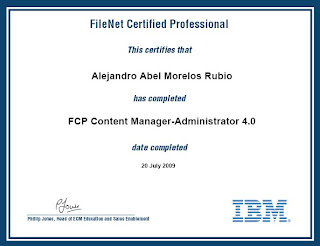//This simple code is actually commonly used, almost "as is" when connecting to an object store,
//there are still few improvements you could do, but it's OK to start testing your connection to a
//FileNet P8 domain. I almost took this code exactly from a training session that I
//had for FileNet P8 4.0 Content Engine development
import java.util.Iterator;
import javax.security.auth.Subject;
import com.filenet.api.collection.ObjectStoreSet;
import com.filenet.api.core.Connection;
import com.filenet.api.core.Domain;
import com.filenet.api.core.Factory;
import com.filenet.api.core.ObjectStore;
import com.filenet.api.util.UserContext;
public class CEConnection{
public Connection getCEConnection(){
Connection connection = Factory.Connection.getConnection("iiop://myServer:2809/FileNet/Engine");
Subject subject = UserContext.createSubject(connection, "administrator", "password", null);
UserContext userContext = UserContext.get();
userContext.pushSubject(subject);
return connection;
}
public Domain getDomain(Connection connection){
String domainName = "P8domain";
Domain domain = Factory.Domain.fetchInstance(connection, domainName, null);
System.out.println("Domain name: "+domain.get_Name());
return domain;
}
public void getObjectStores(Domain domain){
ObjectStoreSet objectStoreSet = domain.get_ObjectStores();
ObjectStore objectStore;
Iterator objectStoreIterator = objectStoreSet.iterator();
System.out.println("Available object stores: ");
while(objectStoreIterator.hasNext()){
objectStore = (ObjectStore)objectStoreIterator.next();
System.out.println("*"+objectStore.get_DisplayName());
}
}
public ObjectStore getObjectStore(Domain domain, String objectStoreName){
ObjectStore objectStore = null;
objectStore = Factory.ObjectStore.fetchInstance(domain, objectStoreName, null);
return objectStore;
}
public static void main(String[] args) {
try {
CEConnectionEDU connectionEDU = new CEConnectionEDU();
Connection connection = connectionEDU.getCEConnectionEDU();
Domain domain = connectionEDU.getDomainEDU(connection);
connectionEDU.getObjectStoresEDU(domain);
System.out.println(connectionEDU.getObjectStoreEDU(domain, "MyObjectStore").get_DisplayName());
} catch (Exception e) {
e.printStackTrace();
}
}
}



